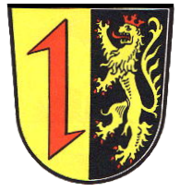| Dockings and Events |
|
| Museum Ship in Mannheim starts on 17.04. till 28.04.2007 |
 |
 Mannheim Mannheim

With 307,640 inhabitants it is the second largest city in the state of Baden-Württemberg after the capital Stuttgart.
Mannheim is situated at the confluence of the rivers Rhine and Neckar, in the northwestern corner of the state of Baden-Württemberg. The Rhine separates Mannheim from the adjacent Rhineland-Palatinate city of Ludwigshafen. The Hessian border is north of the city. Mannheim is the largest city of the Rhine Neckar Area, a metropolitan area with 2.4 million inhabitants.
Mannheim is unique among German cities in that its central area is laid out in a grid pattern (called Quadrate, squares), much like many North American cities. The main route through the squares leads to an enormous 18th century palace. This former seat of the Electors of the Palatinate now houses the University of Mannheim.
History
Mannheim is first mentioned in a document from 766, the "Codex Laureshamensis" from the Lorsch Cloister. It is listed as "Mannenheim" (Home of Manno). It remained a village until Frederick IV, Elector Palatine initiated building the fortress Friedrichsburg and the adjacent grid-like city core.
The city was destroyed subsequently in the Thirty Years' War in 1622 by Tilly's troops, and in the Nine Years War for the Palatinate succession in 1689 by the French.
Rebuilt in 1720, the capital of the Palatinate was transferred from Heidelberg to Mannheim. It was then that Karl III Philip, Elector Palatine began construction of the Mannheim Palace and the Jesuitenkirche. They were completed in 1760. In the 18th century Mannheim was home to the so-called Mannheim School of classical composers. It was reputed to have one of the best court orchestras in Europe under the leadership of Carlo Grua.
Karl Benz invented and drove the world's first car in Mannheim in 1885. He was granted a patent for that first automobile in January of the next year. Earlier still in 1817, Karl Drais invented and rode the first two-wheeled contraption called Laufmaschine or velocipede—the very start of horseless personal transport. Banker Otto Hermann Kahn was also born there.
In 1819 Norwich Duff noted the following observations:
'Mannheim is in the Duchy of Baden and situated at the confluence of the Rhine and Neckar over both of which there is a bridge of boats. This is the third town of this name having been twice burnt. The houses are large, and the streets broad and at right angles to each other, and is one of the most airy clean towns I have seen in Germany. It was formerly fortified but the fortifications were rased in 1806 and gardens fill their places. There is a large Chateau here belonging to the Grand Duke and a very good garden; part of the Chateau was destroyed when the town was bombarded and has never since been repaired, the other part is occupied by the Grand Duchess widow of the late Grand Duke who was succeeded by his Uncle having left only three daughters. She is the sister of Eugene Beauharnais [so presumably she was born Hortense de Beauharnais daughter by her former marriage of Napoleon Buonaparte's Empress Josephine]. There is a Cathedral, a Theatre which is considered good, an observatory, a gallery of pictures at the Chateau and some private collections. About 2 km (1 mile) below the town the Russian Army crossed the Rhine in 1813. Population 18 300.'
During the World War II, Mannheim (as a key industrial centre) was heavily damaged by U.S. and British bombing. The city was occupied by the U.S. Army on March 29, 1945. There has been a large American military presence in the Mannheim area ever since

Quelle: www.wickipedia.de |
|
 |
|
| |
|
|
|

